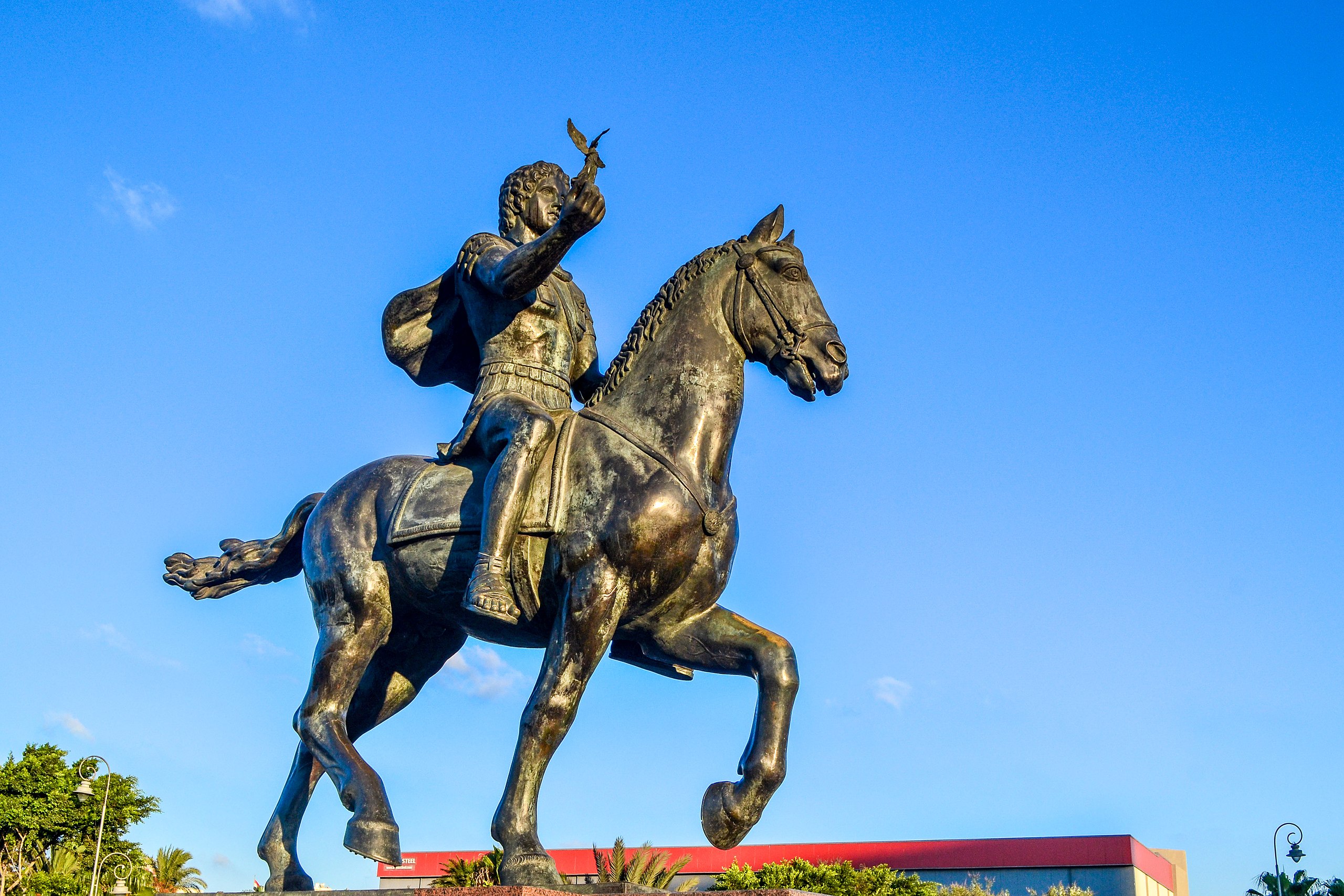Home | Alexander the Great
- CountryEgypt
- Town:Alexandria
-
Year of creation:2002
- Rider(s):Alexander the Great
(356 BC –323 BC), was a king of the ancient Greek kingdom of Macedon. He succeeded his father Philip II to the throne at the age of 20 and spent most of his ruling years on an unprecedented military campaign through western Asia and northeast Africa, and by the age of thirty, he had created one of the largest empires of the ancient world, stretching from Greece to northwestern India. He was undefeated in battle and is widely considered one of history’s most successful military commanders.
During his youth, Alexander was tutored by Aristotle until age 16. After Philip’s assassination in 336 BC, he succeeded his father to the throne and inherited a strong kingdom and an experienced army. Alexander was awarded the generalship of Greece and used this authority to launch his father’s pan-Hellenic project to lead the Greeks in the conquest of Persia. In 334 BC, he invaded the Persian Empire and began a series of campaigns that lasted 10 years. He overthrew Persian King Darius III and conquered the his empire in its entirety. At that point, his empire stretched from the Adriatic Sea to the Beas River.
Alexander endeavoured to reach the “ends of the world and the Great Outer Sea” and invaded India in 326 BC, winning an important victory over the Pauravas at the Battle of the Hydaspes. He eventually turned back at the demand of his homesick troops, dying in Babylon in 323 BC. In the years following his death, a series of civil wars tore his empire apart.
He founded some twenty cities that bore his name, most notably Alexandria in Egypt. Alexander’s settlement of Greek colonists and the resulting spread of Greek culture in the east resulted in a new Hellenistic civilization, aspects of which were still evident in the traditions of the Byzantine Empire in the mid-15th century AD and the presence of Greek speakers in central and far eastern Anatolia until the Greek genocide of the 1920s. Alexander became legendary as a classical hero, the measure against which military leaders compared themselves. Military academies throughout the world still teach his tactics. He is often ranked among the most influential people in history.
- Sculptor(s):Loghos, Constantinos Baliou
- Original in:Pella (Greece)
This statue was donated in 2002 to the city of Alexandria by an association that promotes Greek-Egyptian friendship. This coincided with the grand opening of the new Bibliotheca Alexandrina. Alexander the Great founded the city, that became a centre of Hellenistic culture, in 332 BC. The statue emphasises the pacifying role of Alexander, hence the ‘angel of peace’ he holds up in his right hand. Alexander sits on a saddlecloth without stirrups as the Greek did. The breastplate is not conform to the style of his time and should be much broader and attached to the saddle cloth, to keep it in place. The small size of the horse is conform the classical Greek era. The horse trots vigorously, like it is trained in dressage. This is difficult without saddle and stirrups. Xenophon describes this exercise around 387 BC in his chapter on the parade horse in his book The Art of Horsemanship.
Horse in Art
photographer unknown






